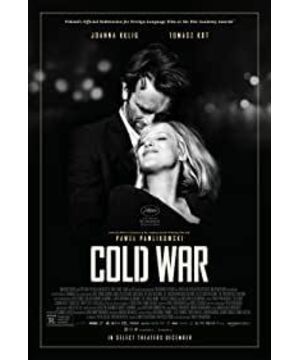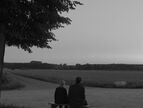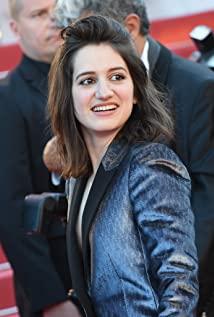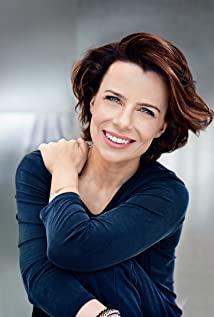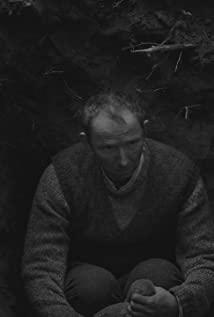Life is like a circle, we will eventually return to the starting point.
In 2012, the authoritative British film review journal "Sight and Sound" selected the "Top 10 Film History", of which black and white films accounted for seven. It can be seen that black and white films play an important role in the history of world cinema.
2012 "Sight and Sound" Top Ten Film History
1. Vertigo (1958) Alfred Hitchcock
2. Citizen Kane (1941) Orson Welles
3. "Tokyo Story" (1953) Yasujiro Ozu
4. The Rules of the Game (1939) Jean Renoir
5. "Sunrise" (1927) Murnau
6. 2001: A Space Odyssey (1968) Stanley Kubrick
7. The Searcher (1956) John Ford
8. The Man with the Camera (1929) by Djiga Vertov
9. The Passion of Joan of Arc (1928) Carl Dreyer
10. "Eight and a half" (1963) Federico Fellini
Except for 1, 6, and 7, the rest are black and white
Now that color films are prevalent, black and white creation is no longer the mainstream of the public, but there are still a small number of directors who insist on black and white images, including Polish film director Paviu Pawlikowski, whose new work this year is exactly A stunning black and white film -
"cold war"
"Cold War" tells the story of two men and women with different identities and backgrounds falling in love in the cruel Cold War era.
Its minimalist and emotionally charged image quality won over the European judges, and Pawlikowski also won this year's Cannes Best Director Award.
1
The parental love of root-seeking culture
The ups and downs of love in big times are the tragic core of this film. One is the musician Wiktor and the other is the female singer Zula. The two fell in love cautiously in the politically charged Cold War era.
In the collision between the two camps of capitalism and socialism, their love is more like a small flower in the crack, which is difficult to open.
It doesn't have the joyous joy of "Roman Holiday" or the tough decisions of "Casabraca." Some are just the soothing calm of a night tour of Paris, and some are just the poetic tranquility under the accordion.
In the face of the political oppression in the Cold War era, the lovers can only use music to vent their emotions. Music connects their love experiences and is the witness of their splitting and closing. At the same time, it also creates a spiritual space for us. Nostalgia, tenderness hides compassion.
Polish national music is very emotionally penetrating. It is like the lightning bolts of love, piercing the sky, looking for a throbbing that is hard to miss in an uneasy era. The opening thirty minutes of music and dance rehearsal in the film even reminded people of "Youth" directed by Feng Xiaogang.
But unlike "Youth", which is overly dramatic, "Cold War" is more personal. The love story of the protagonist in the film is based on the director's parental experience, and the end credits - dedicated to my parents, is an excellent proof.
Pawlikowski, a Polish, whose parents were Polish intellectuals, left Poland at the age of 14 and lived in Germany and Italy before settling in England. The influence of family culture and the long-term wandering outside made his character more or less cold, with the elegant temperament of European intellectuals, which was also deeply injected into the film.
His previous films were all very petty-bourgeois-style romance films, with small and delicate layouts, full of the cleverness and sharpness of European intellectuals.
But starting from 2015's "Nun Ida", Pawlikowski completely changed his video style and found his creative outlet again: accepting and facing Polish culture, and making his own films.
It can be said that he, who has been "lost" before, has returned to his hometown and started a journey to find the roots of the motherland's culture. The cultural nature of Poland brought inspiration to the director. "Sister Ida" was his first Polish film, which won him a great reputation, and he also won the Oscar for best foreign language film that year.
Three years later, he released his new work "Cold War", which is different from the serious philosophical thinking of "Sister Ada", the former is more like an exquisite love essay.
But the only constant is the continuation of the minimalist style of "Nun Ida", which also labelled Pawlikowski a "Polish author".
2
The inner monologue of minimalism
The narrative time of the film is from 1949 to 1964, and the 15-year time story was condensed into 88 minutes by the director with images.
Compared with some masterpieces of love that lasted for three or four hours, "Cold War" is short and concise, full of inner strength, and uses extremely concise and thorough narrative techniques to conquer the audience, giving people a kind of soul touch that goes straight to the heart. This kind of touch comes from the contemplativeness brought by the blankness of the picture.
White space is the highest state of Chinese ink painting. Every frame of minimalist blank pictures in "Cold War" is more like echoing with oriental culture. The director eliminated the clutter of the scene and cut down unnecessary objects. It was clean and simple, and it was as quiet as a virgin. It was like drawing an ink painting.
To a certain extent, the blank space is more like the audience's inner monologue. It infinitely accommodates the audience's thinking, reveals all the mysteries outside the scene frame, and completely immerses the audience in the ocean of blank space.
In addition to the blank processing of single-frame pictures, the director also uses omitted editing techniques to build a narrative structure, eliminate unnecessary time and space trivia, and use simple shady scenes to string scenes. This condensed time has a very speculative wisdom. Also full of unknowable coldness.
This sense of coldness is taken from the minimalist picture, and we will see some compositions that go against the norm.
The director often uses an overhead perspective, placing the main characters at the bottom of the picture, filling the middle with background characters, and highlighting the ceiling, in order to extend the space and create a sense of depth of field.
This coincides with the theme expressed by the film: the individual is just a drop in the ocean, and will eventually disappear in the long river of history.
Although life is gone, love remains forever. The ending is like a reincarnation, and we see the church scene that appeared before the movie opens.
They went back to their original places, changed back to their original appearance, cuddled with each other, never parted, and then dissipated like a gust of wind across the wheat field.
View more about Cold War reviews


